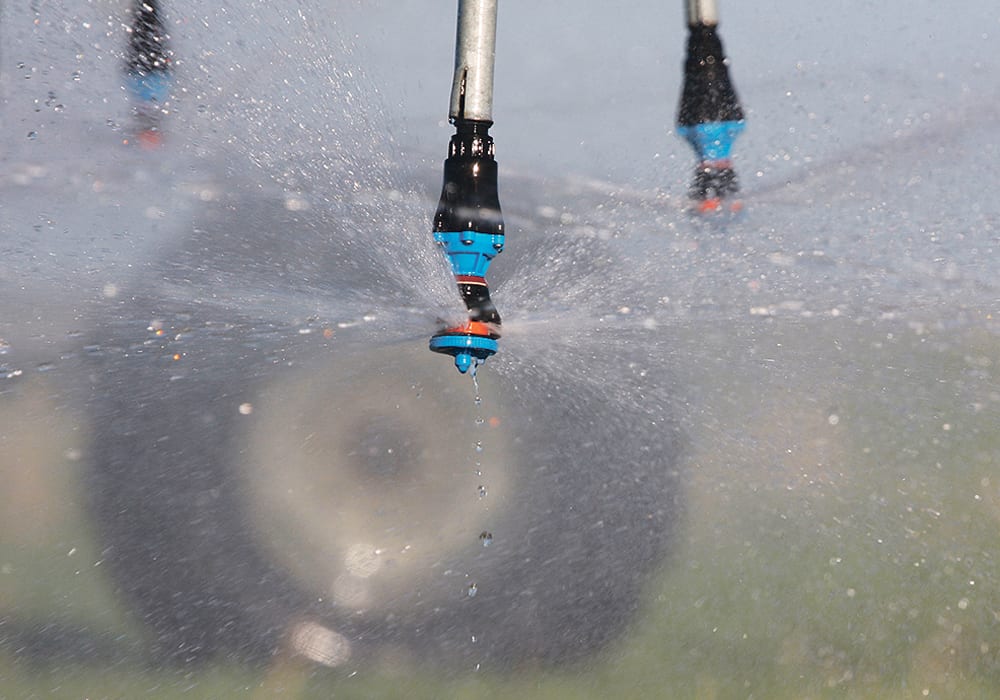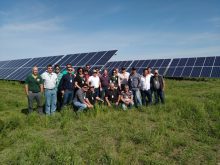Saskatchewan is encouraged to use money available through the federal Disaster Mitigation and Adaptation fund
An advocate of developing Saskatchewan’s water resources says the province would do well to access a federal fund and start building water infrastructure.
Wayne Clifton, senior principal at Clifton Associates, said money available through the Disaster Mitigation and Adaptation fund could be used to further develop infrastructure around Lake Diefenbaker.
As a civil engineer for decades, Clifton has watched the climate change, and said water management is key to dealing with disasters.
“Science says clearly that the world is warming and that our frequency of precipitation and runoff is much more variable,” he said.
Read Also

Farming Smarter receives financial boost from Alberta government for potato research
Farming Smarter near Lethbridge got a boost to its research equipment, thanks to the Alberta government’s increase in funding for research associations.
“It will require intervention by human kind if we are to preserve and utilize our water resources.”
Lake Diefenbaker’s potential in that adaptation is key, he added.
The province’s agricultural irrigators have long backed expanding their sector, and a feasibility study done several years ago pointed to the ability to open up more irrigable land while better serving the Moose Jaw-Regina corridor through an Upper Qu’Appelle conveyance project.
It would take water from the south end of Lake Diefenbaker to Buffalo Pound Lake.
Clifton said irrigation hasn’t expanded much beyond the initial agreement in the 1960s when the Gardiner Dam was built and Lake Diefenbaker formed.
“There’s been no movement on that since, even though Saskatchewan has higher land quality compared to southern Alberta,” he said.
“We’ve got higher heat units and we’ve got available water, but we have not exploited it at all on the irrigation side or the agricultural side.”
Southeastern Saskatchewan relies on the Souris River and its tributaries but could use a better supply, and he said moving more fresh water through the Qu’Appelle conveyance would sustain and enhance the environmental quality of the Qu’Appelle lakes system.
Ten years ago, the project cost was estimated at more than $550 million and it would be substantially more today.
“It’s expensive but it’s also perpetual,” Clifton said.
“Once in place it becomes a part of the sustainable infrastructure for the economy.”
Saskatchewan Liberal cabinet minister Ralph Goodale said the $2 billion federal fund is for “transformative” large infrastructure projects that would help adapt to climate change and prevent natural disasters.
“Nationally, government compensation for losses from natural disasters in the last five years have exceeded the volume of all previous payouts stretching back through 40 years,” he said.
“We need to build better structures and systems to protect water and to optimize its use.”
Goodale said Saskatchewan projects could advance flood and drought proofing and set up water-based economic development.
“This is a huge opportunity for Saskatchewan,” he said.
The projects are to be cost-shared with provinces, First Nations and private sector applicants.
A spokesperson for SaskBuilds said the province has made several applications to the fund since it was announced in May but will be competing with other applicants.
“I would also highlight that the federal government has designed the program as what they call a nationally competitive program, which means there are no specific allocations established for Saskatchewan or any other jurisdiction,” said Lisa Danyluk, director of strategy and engagement.
Clifton said he is confident a project will come about some day.
“I put this in the same category as the original South Saskatchewan River dam, as it was called at that time,” he said.
“It took 20 odd years to get the province and senior governments to agree to proceed. These things don’t happen quickly, but it will happen.”
He added that he has long advocated for investment in water and said it should equal investment in transportation systems.


















